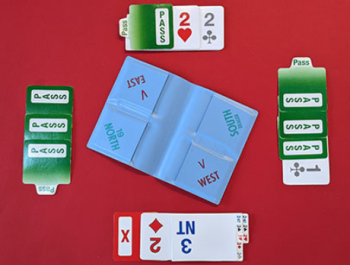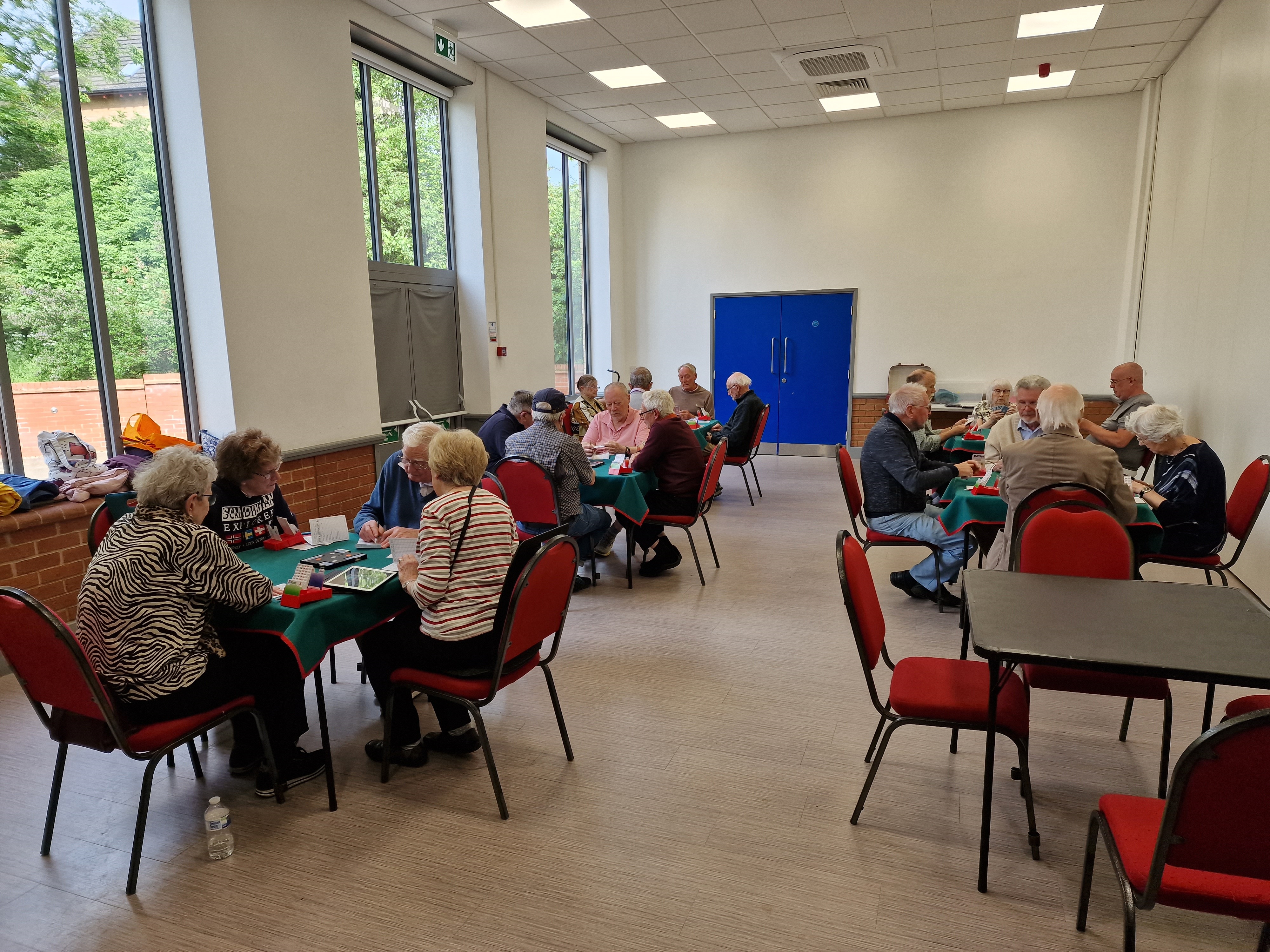
Replies to an opening bid by your partner
Your partner has bid. Now what?
 It's important to note that what follows, assumes that the opponents have not bid. If they do, your reply to your partner may change and often does. For the purpose of these lessons I'm assuming the opponents pass. Once your partner has bid you have the option of replying if you have certain values in your hand. Your reply should endeavor to tell your partner two things:
It's important to note that what follows, assumes that the opponents have not bid. If they do, your reply to your partner may change and often does. For the purpose of these lessons I'm assuming the opponents pass. Once your partner has bid you have the option of replying if you have certain values in your hand. Your reply should endeavor to tell your partner two things:
- How strong your hand is. That is how many points you hold
-
Which suit, if any, you want to use as trumps
That's a lot of information since you can only use legal bids so Acol has a way of describing your hand within quite narrow limits. The following are your options to bid and what they mean to your partner:
- 0 to 5 points, pass. "Sorry partner, don't rely on me for anything"
- 6 to 9 points, raise partner's suit by one level. Meaning, "I like your suit but have a very weak hand and you probably shouldn't bid again unless you have more points than you are telling me". OR
- Bid one no trump means the same as above but "I don't like your suit".
- 10 to 11 points. Bid your own suit even if you like your mine. Meaning "I have a reasonable hand and a biddable suit. I may like your suit but I'll tell you later. Please bid again if you get the chance".
- 12 to 14 points. Jump bid. Raise the bidding by one more level than you need to. An example would be bidding two hearts when partner has opened one diamond. Meaning. "I also have an opening hand and we should be able to make game. Bid again please".
Note that you need at least four of a suit with at least one honour card to bid your own suit and at least three cards of partner's suit to support him or her. (Important: Many people play what's known as 5 card majors. If you play this you must have 5 cards in the trump suit in order to open Hearts or Spades)
An honour card is Ace, King, Queen or Jack and some people include the ten.
I wrote this bidding crib sheet in the 1970s for teaching beginners. It seems to work. Please feel free to download it.
That's quite enough about bidding for now. Obviously when you are in a real auction people keep bidding and overbidding each other. It's way beyond the scope of these lessons to carry on from here as the objective is to start you off. As you play you will gradually get used to the bids that follow on from the opening bid and reply.
There are also some artificial bids which have special meaning and these are covered in this section. You will also need to know about slam bidding. You don't need to know these at first but you will need them eventually.
In this section I have only covered the opening bid and the reply but in practice the bidding is likely to continue upwards towards a game contract or even a slam. On top of this the opponents may intervene in the bidding or may be bidding for their own contract. There are hundreds of books written on bidding and my intention here is simply to provide and insight to the start of the bidding process. Having got an idea of the opening bids and the replies there is only one way to continue and that is to actually play the game. Most clubs have provision for beginners or improvers and we always welcome new players. Let's now move on to actually playing the hands.
In most bridge clubs, including ours, bidding is done silently. It's far too easy to change the tone of your voice so that partner gets additional information from your bid that they shouldn't have. For that reason, a set of bidding cards, one for each player, is used and these are placed face up on the table for all to see. Please note the above picture.
Internal Website Links
- Home Page
- Weekly Results
- Bridge Etiquette
- Beginners Lessons
- Artificial Bids (Conventions)
- Slam Bidding
- English Bridge Union
- Play Bridge On Line
- Brian Bridge Scoring
Ads by Google
